Lombok's #1 Tourism Magazine
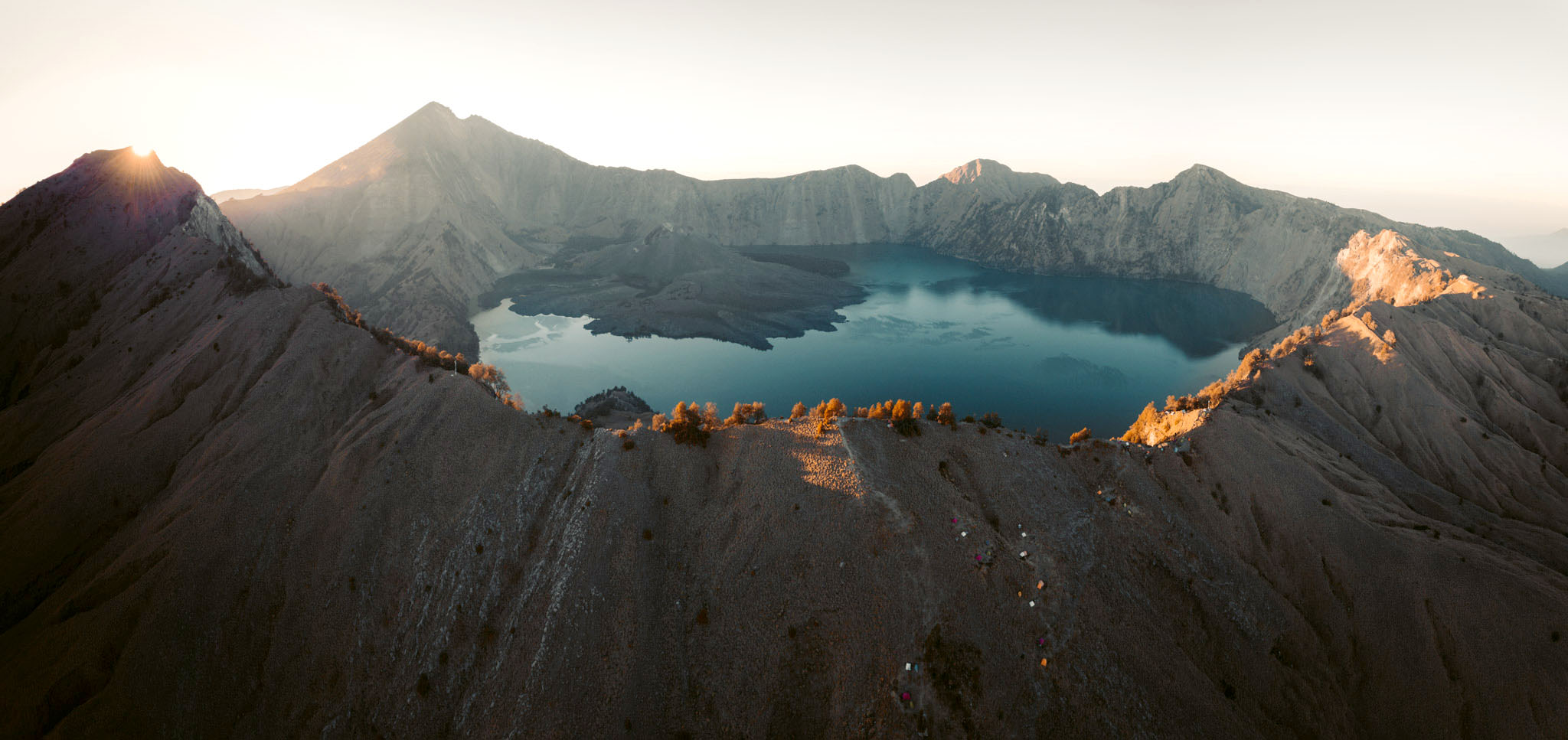 © October 2019. Photos and contributions by Olly Gaspar
© October 2019. Photos and contributions by Olly Gaspar
Visit: www.weseektravel.com
At 3,726m above sea level, Mt Rinjani is the second highest volcano in Indonesia and one of the most important tourist attractions on Lombok, with almost 100,000 people climbing the volcano annually.
Rinjani is famous not just for its impressive height but also for its incredible beauty. The volcano is surrounded by tropical rainforest on the lower slopes, savannah plains on the upper slopes, and is topped with a jagged peak of rocks on the summit.
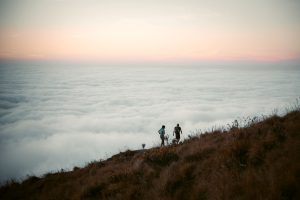 The huge caldera within the volcano is around 4 km wide and is almost filled by a beautiful lake, Danau Segara Anak (‘Child of the Sea’ Lake). The lake is around 230m deep and contains plentiful fish, as well as being home to birds and other wildlife.
The huge caldera within the volcano is around 4 km wide and is almost filled by a beautiful lake, Danau Segara Anak (‘Child of the Sea’ Lake). The lake is around 230m deep and contains plentiful fish, as well as being home to birds and other wildlife.
Jutting from the crater’s edge, a smaller volcanic cone – Gunung Baru Jari – rises out of the lake, occasionally sending out plumes of smoke and ash. This cone was formed a couple of hundred years ago and is still active, although it usually poses no danger to trekkers.
The volcano is so unique and important geographically, Rinjani was awarded UNESCO Global Geopark status in 2018.
IS MOUNT RINJANI CLOSED FOR TREKKING?
Mt Rinjani trekking is definitely not closed. After being closed to trekking for ten months (post-earthquakes in July 2018), Mt Rinjani was officially re-opened on 14 June 2019 and people have been flocking to climb Lombok’s iconic volcano ever since!
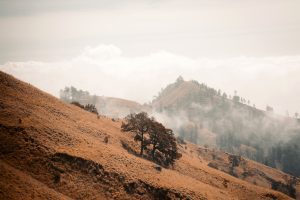 RINJANI TREKKING AFTER THE EARTHQUAKES
RINJANI TREKKING AFTER THE EARTHQUAKES
While trekking routes were damaged and you will still see evidence of that on the treks, all routes are now open to the crater rim overlooking the lake where trekkers can camp to admire the beauty of this magnificent volcano.
Climbing to the challenging summit, made up of jagged rocks, loose shale and volcanic sand, is out of bounds at the moment. The earthquakes damaged the access route, and the loose surface makes the summit unstable and too dangerous to climb.
Likewise, the route to the crater lake and its shore was cut off by landslides and, until the National Park Authority can establish new tracks, the slopes leading down to the lake are too unstable for trekking.
Note that trying to climb to the summit or descend to the lake is strictly forbidden by the Park Authority for now. Attempting to do so may put your life – and the lives of other trekkers – in danger. Follow the rules.
There are currently four routes for climbing the volcano: Senaru in North Lombok, Sembalun and Timbanuh in East Lombok, and the Aik Berik trail in Central Lombok.
If you’ve been planning a trip to Lombok to climb Rinjani, this is a good time to do it before the crowds come back!
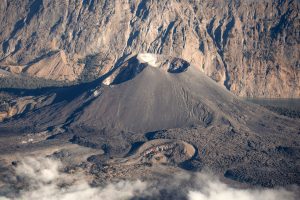 WHY DO YOU NEED A GUIDE?
WHY DO YOU NEED A GUIDE?
Don’t try hiking Mount Rinjani without a guide. Guides and porters know the routes, where the dangers are, and how to get you up and down the mountain safely.
Here’s a few other reasons to use guides and porters:
- Local families rely on trekking tours for income and, with such a bad year last year, they need your support more than ever.
- You’ll have to pay the National Park Entry Fee anyway, and your trekking company makes it easy by organising all the paperwork, including daily quotas, for you.
- You don’t want to miss out on a wealth of local knowledge and delicious mountain-cooked food. If you’re struggling, your guides will go ahead and have camp set up for you and dinner cooking by the time you arrive.
- Otherwise, you would have to carry your own supplies and camping equipment – something you would regret within an hour of starting!
BOOKING A TREKKING TOUR
Shop around and find a reputable trekking company. There are many Rinjani treks available online – read the reviews and choose one that suits your needs.
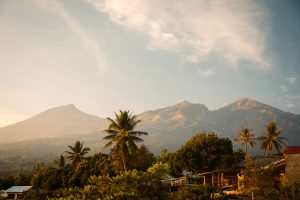 Depending on the quality of your trekking tour, prices to the Rinjani Crater Rim from Senaru vary between Rp 1.8 million to Rp 2.5 million. If you have a larger group, you can also negotiate a cheaper price.
Depending on the quality of your trekking tour, prices to the Rinjani Crater Rim from Senaru vary between Rp 1.8 million to Rp 2.5 million. If you have a larger group, you can also negotiate a cheaper price.
For those interested in trekking from Timbanuh or Aik Berik, expect to pay a little more since these areas have less hiking infrastructure.
Most guided tours to the crater rim run for 2 days and 1 night. This gives you the opportunity to reach the rim by sunset, spend the night and then descend again after an epic volcano sunrise.
A good company will organise everything, including transport to and from your location, and one night’s accommodation at your starting point before the trek.
Most Rinjani Crater Rim tours include an experienced guide, porters to carry all equipment, Rinjani National Park Entry Permit, enough food and water for the trek, tents, sleeping bags, and a sleeping mat.
Be aware that cheap tours may skimp on food or equipment, like sleeping bags. Check exactly what is included in the price.
Another important factor is whether the tours pick up and carry down plastic waste. Unfortunately, there’s a lot of rubbish on the trails, so rewarding companies that do their part to clean up will go a long way.
WHAT DO YOU NEED TO BRING?
Your guides and porters will carry all necessary supplies for camping and cooking. However, you’ll need to be responsible for bringing (and carrying) the following in a small day bag:
Warm clothes, comfortable hiking shoes or boots, toiletries, sunblock, snacks, any medications you need, and your camera.
RINJANI TREK DIFFICULTY
Trekking to the crater rim requires no technical climbing abilities but you must be generally fit to be able to reach the crater rim in one day of hiking.
Routes are steep and physically demanding. On the way down, it can get slippery as you sand-skate down the mountain.
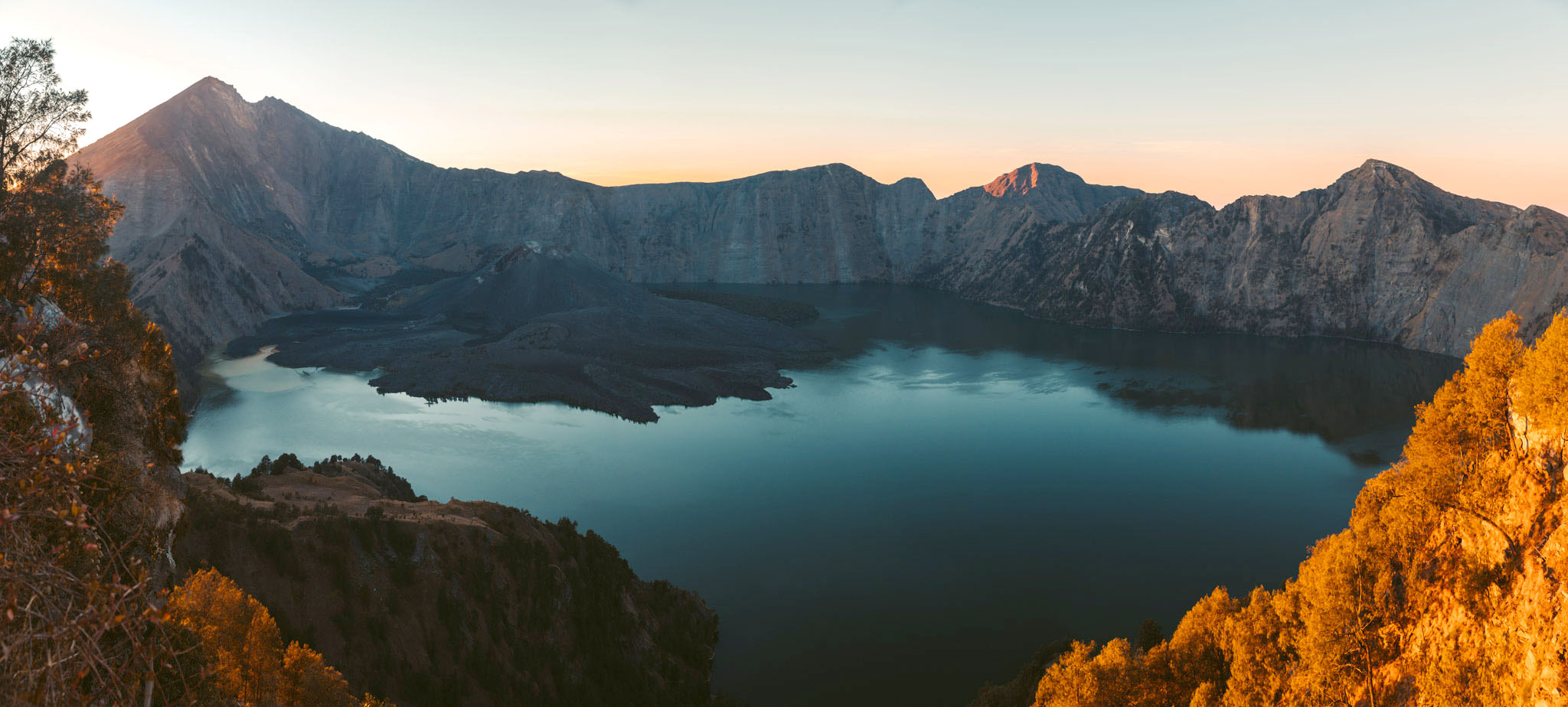 WHAT TO EXPECT ON THE RINJANI CRATER RIM HIKE
WHAT TO EXPECT ON THE RINJANI CRATER RIM HIKE
While Mount Rinjani’s summit is 3,726 metres (12,224 feet), the crater rim altitude is 2,639m (8,658 feet).
If, for example, you are starting from Senaru, which sits at around 650 metres, you’ll climb nearly 2,000 metres of elevation in one day. It’s a leg burner, but the views are worth it!
The trek begins early with your trekking guides driving you to the National Park entrance. Here, you’ll sign your names on a register and your guides will pay for your entry permit, which should always be included in your tour. Ahead of you is a steep 7-hour ascent to reach the crater rim.
Along the way, there are three main stops where trekkers can rest their legs. The first stretch is mostly through dense jungle, where you can spot the famous black monkeys. Depending on your pace, your guides and porters will most likely stop at POS 2 to make a cooked lunch, typically rice with eggs, tofu or tempeh and vegetables.
After POS 2 and shortly before POS 3, roughly 5 hours into the trek, you’ll break out of the jungle and into a savannah-like landscape. It can get pretty hot and dusty in this section.
The final stretch is the steepest, but soon you’ll reach the crater rim where you’ll get incredible views of Lake Segara Anak and the entire volcanic crater.
CAMPING ON THE MT RINJANI CRATER RIM
While you get busy snapping photos, your guides and porters will set up your campsite. Everyone tries to get there early enough to find the best spot, right on the edge of the Crater Rim.
You’ll get some of the best views by walking around to the communications tower, just to the right of the path. Here, there are no trees to block the stunning views of the lake and its volcanic cone.
Sunset is arguably better than sunrise on Mount Rinjani, as the sun positions itself perfectly to light up the lake and paint colours on the cotton-candy clouds below you.
After falling asleep under a night sky filled with stars, you’ll probably wake up a little sore, but undoubtedly excited about catching the sunrise over the volcano.
Soon after, your guides will prepare breakfast before packing up to make the tiring descent back down the mountain. Expect about 4 hours for the entire descent from the crater rim to Senaru; slightly longer for other routes.
While not as tiring and challenging as climbing, the descent is still tough, since you’ll undoubtedly be slipping and falling on the loose sandy ground. Expect sore shins and feet for a couple of days afterwards.
Before you arrive back at the National Park entrance, your guides will usually cook one last jungle lunch at one of the rest spots on the way down so you can take a break.
Shortly after, you’ll be back at the National Park entrance and ready to be transported to your next destination. After your trek, spend a couple of days relaxing somewhere nice and plan to include a massage!